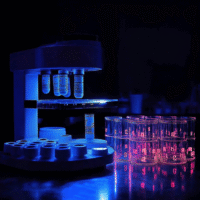Understanding the MOSAIC Study Results
What is the MOSAIC Study?
The MOSAIC study looked at a new drug called miransertib for children and adults with two conditions: PIK3CA-related overgrowth spectrum (PROS) and Proteus syndrome. These conditions cause parts of the body to grow more than normal.
Key Findings from the Study
- Safety of Miransertib: The study showed that miransertib is safe for people with PROS or Proteus syndrome. Most participants did not have serious side effects.
- Common Side Effects: Some side effects were reported, including a drop in certain blood cells, higher blood insulin levels, and mouth sores. These were mostly mild.
- No Serious Complications: Only one participant had a serious issue (deep vein thrombosis), but no one had to stop the study due to side effects.
What Does This Mean for Patients and Clinics?
- This study shows that miransertib is generally safe and can be tolerated by patients with PROS or Proteus syndrome.
- Future research is needed to see if patients get significant health improvements from this drug.
Practical Steps for Clinics
- Monitor Patient Health: Clinics should keep track of any side effects in patients taking miransertib. This includes regular blood tests to check cell counts and insulin levels.
- Assess Treatment Benefits: Doctors should look for improvements in growth patterns or symptoms in their patients over time.
- Use Technology: Consider using AI tools to help track patient data and analyze treatment effects efficiently.
How to Start Using These Findings
- Begin with a Small Group: Start by offering miransertib to a few patients with PROS or Proteus syndrome to monitor effects closely.
- Gather Data: Collect information on side effects and any improvements in health.
- Expand Gradually: As you gain experience, increase the number of patients receiving treatment while ensuring safety.
Further Reading
For more detailed information about the study, you can visit this link.


























